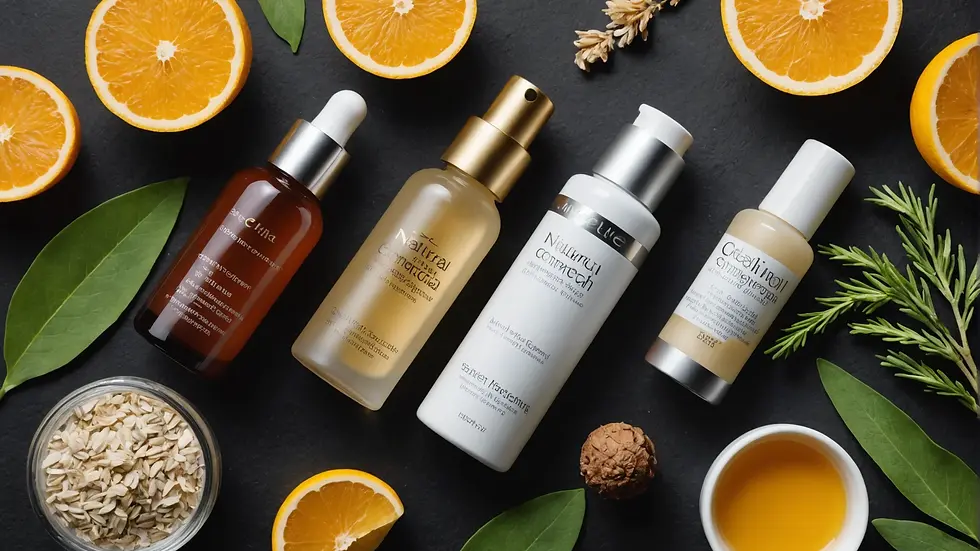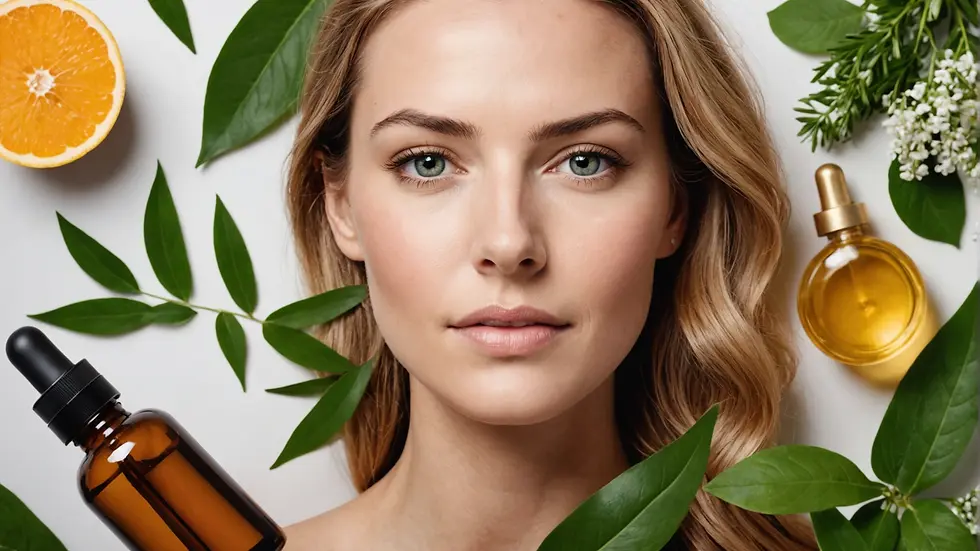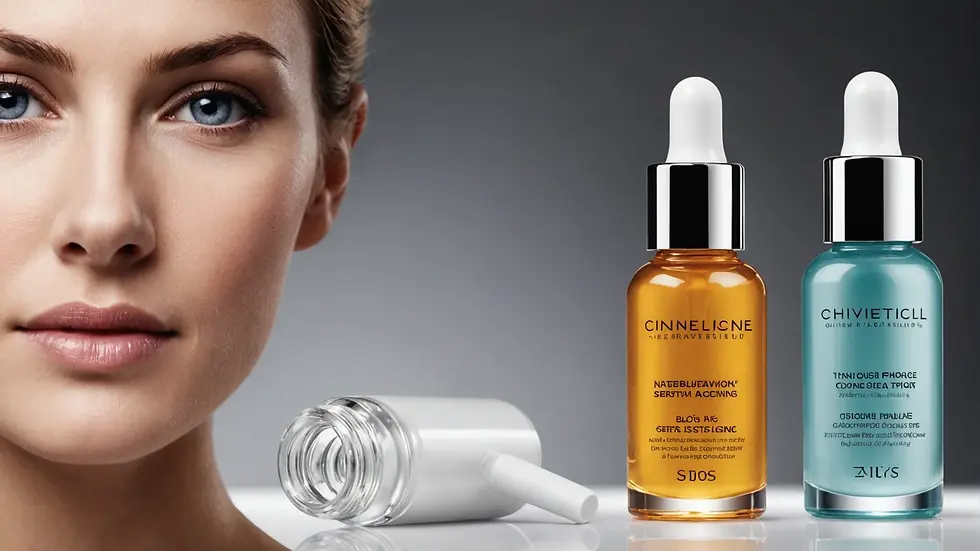
The quest for youthful skin has never been more prevalent. With countless products making bold claims, choosing between natural anti-aging serums and commercial alternatives can be overwhelming. This post will break down the key differences between these two categories, focusing on their ingredients, effectiveness, and user experience. Your choice in anti-aging solutions could significantly impact your skin's health and appearance, and being well-informed can help you make the best decision.
Understanding Anti-Aging Serums
Anti-aging serums are designed to help tackle specific skin issues like wrinkles, fine lines, and loss of elasticity. These formulations are often lighter than creams, allowing for quick absorption and targeted delivery of active ingredients. The right serum can make a noticeable difference in skin appearance and health, so it's crucial to understand what you're putting on your skin.
Natural Anti-Aging Serums
Natural anti-aging serums typically consist of organic ingredients sourced from plants and fruits. These products pride themselves on sustainable practices and minimal processing. Unlike their commercial counterparts, they focus on providing benefits without synthetic additives or harsh chemicals, appealing to consumers who value health and the environment.
Commercial Anti-Aging Serums
Commercial serums, produced by well-known brands, often include a mixture of synthetic and natural ingredients. These products attract attention with claims of fast results, often backed by clinical studies. While promising immediate changes, these serums can come with a caveat—often, they may also lead to unwanted side effects for some users.
Key Ingredients: A Comparison
Natural Ingredients
Natural anti-aging serums feature a variety of potent, skin-friendly ingredients. Here are some specific examples:
Vitamin C: This powerhouse antioxidant can enhance collagen production, helping to reduce wrinkles. A study found that using Vitamin C can improve skin texture by up to 20% over a few weeks.
Hyaluronic Acid: Known for its incredible moisture-retaining ability, hyaluronic acid can hold up to 1,000 times its weight in water, providing a plump and youthful look.
Botanical Oils: Oils like argan and rosehip are rich in essential fatty acids, helping to nourish the skin and provide hydration without clogging pores.
Herbal Extracts: Green tea, with its high content of polyphenols, can reduce skin redness and protect against UV damage, improving skin tone and resilience.

These natural components often work together to gradually enhance skin health and appearance.
Synthetic Ingredients
Commercial serums may boast scientifically crafted formulations. Effective synthetic ingredients include:
Retinoids: Known to increase cell turnover, retinoids can reduce fine lines and improve skin tone. Research indicates that consistent use can reduce signs of aging by about 30% within a few months.
Peptides: These short amino acid chains can stimulate collagen production, improving skin elasticity. Studies show peptides can enhance skin firmness by 15% within six weeks of use.
Chemical Exfoliants: Glycolic and salicylic acids help to slough off dead skin cells rapidly. Regular use can lead to noticeably smoother skin after just one week.
While these ingredients can yield substantial results, they may not suit everyone—especially those with sensitive skin types.
Effectiveness and Results
Natural Serums: The Slow and Steady Approach
Natural serums often promote gradual improvements, making them a great choice for those who care about skin health without harsh side effects. Although initial results may take longer to appear, users frequently report enhanced texture and hydration after consistent use over months.
Commercial Serums: Instant Gratification at a Cost
Consumer appeal for commercial serums often lies in their rapid results. Many users see noticeable changes within days. However, the thrill of these quick results can sometimes lead to dependency. For instance, those using strong retinoid products may find that their skin reacts negatively once they stop, leading to a cycle of continuous purchase and application.
Safety and Skin Compatibility
Natural Serums: Generally Gentler
Natural serums are often kinder to the skin, making them suitable for various skin types, including those prone to irritation. Since these products prioritize organic ingredients, they frequently have fewer reported side effects, creating a safe option for most consumers.
Commercial Serums: Patch Testing Is Key
Given the variance in formulations among commercial brands, patch testing is essential. Some users may experience reactions from specific preservatives and synthetic additives. Ensuring a product is compatible with your skin type through patch testing can significantly reduce the likelihood of irritation.
The User Experience: Sensory and Emotional Appeal
Natural Serums: A Holistic Skincare Ritual
Many consumers appreciate the sensory experiences that come with natural serums—think earthy scents and the satisfaction of using sustainably sourced ingredients. This aligns well with a growing trend towards mindfulness and a desire for authenticity in skincare routines.
Commercial Serums: The Allure of Branding and Promises
Commercial serums often attract users with sleek packaging and promises of revolutionary results. However, these marketing strategies can sometimes lead to disappointment when the product doesn't meet expectations, creating a disconnect between promise and reality.

Cost Considerations
Natural Serums: Value in Quality
Natural serums often come with a higher price tag due to the quality of ingredients and ethical sourcing. Many users consider the investment worthwhile, as the gradual improvements can ultimately save costs on procedures or dermatological treatments.
Commercial Serums: Budget-Friendly Options?
The price range for commercial serums varies widely. While some products may fit into a budget-friendly category, lower prices sometimes reflect a lower quality of ingredients. Consumers may find themselves spending more on multiple products while trying to achieve desired results.
Environmental Impact
Natural Serums: A Greener Choice
With greater environmental awareness, many consumers opt for natural serums due to their focus on sustainable practices and Eco-friendly packaging. This choice aligns with efforts to reduce one's ecological footprint through conscientious consumerism.
Commercial Serums: Room for Improvement
Although some commercial brands are improving their practices, many still rely on non-biodegradable packaging and synthetic ingredients, raising concerns among environmentally conscious consumers. Transparency in production processes is key for these brands moving forward.
Final Thoughts on Anti-Aging Choices
Deciding between natural anti-aging serums and commercial options boils down to your personal preferences, skin type, and desired results.
Natural serums provide a gentler, holistic approach, often featuring high-quality, organic ingredients that contribute to long-term skin health with minimal risk of irritation.
In contrast, commercial serums offer faster results but may come with potential side effects, making it vital to choose products wisely.
Both categories have unique benefits, and blending elements from both can create a well-rounded skincare routine. A personal journey towards youthful skin can find success in understanding these products and how they fit your lifestyle.
Embrace your skincare journey with knowledge and purpose—your path to ageless beauty begins here!



Comments